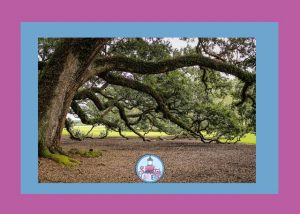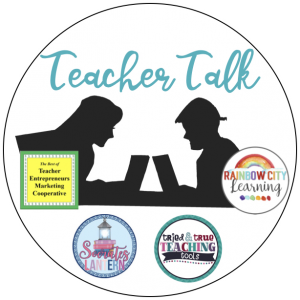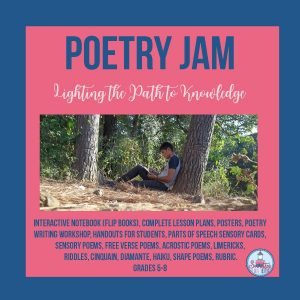
Usually when I tell my students that we are going to learn how to write poems, some of them say, “I can’t write a poem,” or “Yuck, Poetry!.” By the end of the workshop, which takes about 2-3 weeks, most of the kids realize that they can in fact write all sorts of poems and they even like it.
I start my workshop by letting them know that they will be making an interactive poetry booklet of different types of poems and that we will pick one to be published in a book that comes out in May or June. They really love the idea of having a published poem.
I show them the book from previous years and read some poems for them. Now they’re really hooked.What needs to be stressed to the class is that they should continue to use sensory words, colorful adjectives, as well as nouns, verbs and adverbs.
I introduce the poetry workshop using the following: I have a number of cards that I copy for each student with these words: noun, adjective, adverb, verb, smell, touch, hear, taste, feel. The first lesson is to shuffle the cards and turn them over so that they cannot see the word. They are to pick a card and write a word that corresponds with it, then put the card on the bottom of the pile. For example: noun they might write down the word- bird, adjective – pretty, taste-sweet, and so on. After they have come up with a word for each card. They shuffle them again and come up with more words. They then write a little poem using only these words and draw a picture to go along with it.
Another activity that we’ve had fun with is to have a day of writing sensory poems. I would bring in cotton, sandpaper, a rock, string, a spoon, etc. and put one item in a paper bag. The kids would put their hand inside it and touch the object without looking at it. Next we’d brainstorm what words could be used to describe the sense of touch. They’d have to write a free verse poem using only these feeling words and could not mention what the actual object was. You can use the same item for everyone, or vary them. This was done for all the senses as well. I bring in coffee beans, peanut butter, a flower for smell; hard candies for taste; I’d play a CD for hearing, for sight, I have a sand painting in a goldfish bowl. They look at it and write a poem about it.
We usually do #poetry in the spring so pick a sunny day, bring the class outside and have them write a poem about nature, just using sensory words. Some of my kids would lie under a tree in front of the school and look up at it. Others would look at insects or flowers or just lie down and look at clouds. Some interesting poems came out of this.
My partner who teaches science suggested that we collaborate. He would teach them the biological and scientific aspects of our senses which made the lesson more valuable and memorable. #Loveteamwork.
Peace and Happiness
Deann
Here’s a resource that’s just what you need for your poetry classes
Resources:
- Celebration of Young Poets- Creative Communication, Inc. 90 North 100 East Logan, UT 8432www.poeticpower.com
- https://www.youngwriters.co.uk/types-diamante-poem
- https://www.youngwriters.co.uk/types-cinquain
- http://www.kidzone.ws/poetry/haiku.htm
- http://www.kidzone.ws/poetry/limerick.htm
- https://www.youngwriters.co.uk/types-shape-poem
- https://www.youngwriters.co.uk/types-riddle
- http://www.familyfriendpoems.com/poem/limericks-by-edward-lear
- http://www.amazon.com/Teaching-Fabulous-Forms-Poetry-Brainstorming/dp/0439073464/ref=pd_sim_sbs_14_4?ie=UTF8&refRID=0780FM4030ATDFPFY8VK
- Graphic by https://www.teacherspayteachers.com/Store/Whimsy-Clips

Please take a look at these awesome blog posts from our collaborators


This poetry jam seems like a really enjoyable way to create poetry. I do a poetry slam to improve reading fluency. Whatever we do, it sure seems that we do love poetry!
Gini, yes we definitely love poetry. What you do sounds great. Thanks for your comment